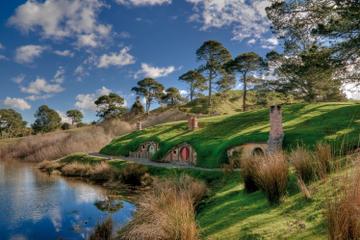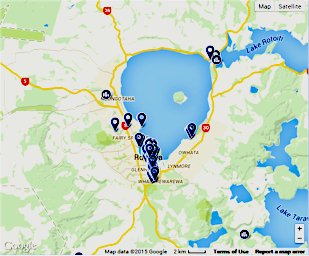« NEW ZEALAND • Discover New Zealand • North Island • Rotorua
Discover Magical Rotorua
Rotorua is home to not only geothermal interests, but botanical gardens and some interesting historic architecture. Known as a spa town and major tourist resort for more than a century, many of the buildings hint at this history. The formal Government Gardens close to the lakeshore at the eastern end
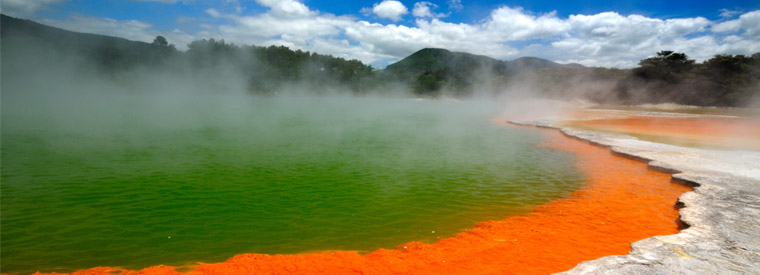
A | B | C | D | E | F | G | H | I | J | K | L | M | N | O | P | Q | R | S | T | U | V | W | X | Y | Z
» Agrodome
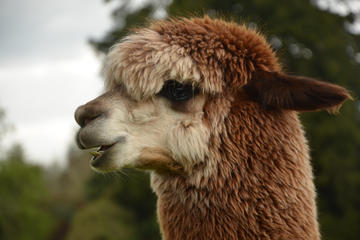
New Zealand is known for having the world's highest ratio of sheep population to humans, which currently stands at about nine sheep for every person in the country. For an even greater understanding of New Zealand's sheep industry, opt for the highly entertaining, hands-on experience found at the Rotorua Agrodome. On this 350-acre working farm just 10 minutes from Rotorua, you can shear a sheep, play with the wool and tour the mill where all of the fluff is spun into fiber …
» Agroventures Adventure Park
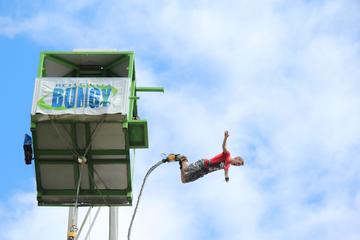
Agroventures Adventure Park is where boredom goes to die. Strap yourself into the passenger seat of a sleek, high-speed jet boat, and splash around corners at 60mph at nearly 3G's of force. Feel the pressure of a bungy cord pulled tight around your ankles, and the instantaneous stomach drop once you fall from 140 feet. Don a squirrel suit and step inside New Zealand's only wind tunnel, where 130mph winds create the feeling of falling from a plane …
» Blue Baths
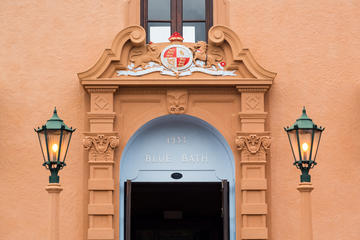
The ornate Blue Baths on the shores of Lake Rotorua blend history, leisure and high society all with anachronistic charm. This art deco, Spanish mission-style building has been masterfully restored to its original splendor from 1933, a time when the thermally heated baths became New Zealand's first place for 'mixed bathing.' The history of baths in this section of Rotorua actually dates to 1885, when men's-only bath houses to the west of the current site sat by the lakeshore …
» Buried Village of Te Wairoa
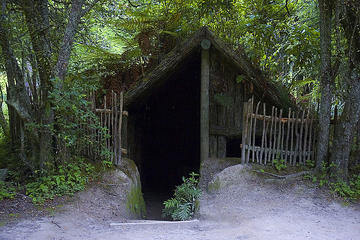
The Buried Village of Te Wairoa offers a unique glimpse into 19th century New Zealand life, as it was buried and preserved by volcanic ash in an 1866 eruption. One of New Zealand's most popular attractions, this archeological treasure houses a museum to the village and the interaction of Maori and colonial cultures. You'll see towering, carved Maori artwork in the museum and then tour the excavation points around the site …
» Government Gardens
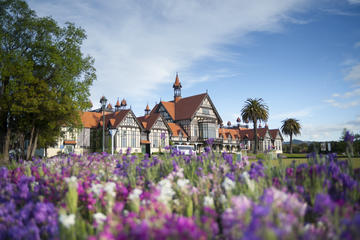
The Government Gardens in central Rotorua are so bountiful that they could easily be mistaken for a piece of the old English countryside. If it weren't for the telltale scent of sulfur that wafts through the air from the nearby hot springs, many visitors would forget where they're standing, due to the Edwardian architecture and dignified landscape. As it happens, this 50-acre compound on the shore of Lake Rotorua was gifted to the Crown by Maori tribes …
» Hells Gate Geothermal Park
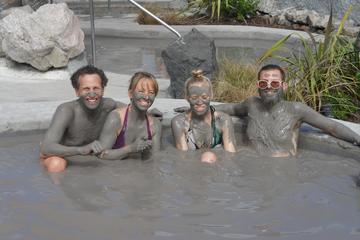
There are lots of places in Rotorua to find bubbling mud and steam vents, but the difference here at 'Hell's Gate' is that the landscape might actually end up scaring you. Rotorua's geothermal activity is most pronounced in this valley, and the steam is just a little bit thicker and the mud gurgles a little bit louder. The earth here is powerfully raw - and that's what's made it such an alluring site since the days of ancient Maori. The famous playwright George Bernard Shaw first uttered the name 'Hell's Gate,' …
» Kaituna River
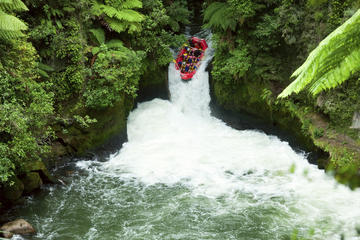
Every paddler and whitewater enthusiast has heard of the Kaituna River. Though the river itself is relatively short at 28 miles in length, the site is home to the world's tallest commercially rafted waterfall. At 23 ft. Tutea Falls, watch the front of your raft go vertical as you free fall to the river below, and then check your pulse in the flatwater pool that's just after the Class V rapid. Though Tutea Falls is a notable exception, most of the river is Class III and IV rafting and is open to adventurous novices …
» Lady Knox Geyser
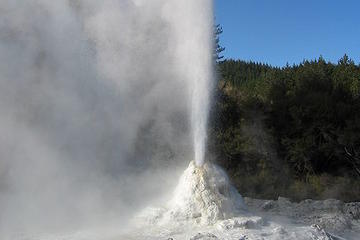
Named for Lady Constance Knox, a daughter of the 15th governor of New Zealand, Lady Knox Geyser is located in the North Island's Taupo Volcanic Zone. While this region is famous for a variety of fascinating geological phenomena, the Lady Knox Geyser is unique. Every day it erupts at precisely 10:15am, when a park guide induces it to do so - with soap. Indeed, the soap is used to break the surface tension of the cold water in the geyser's upper chamber so that it will mix with the hot water in the lower chamber …
» Lake Okareka
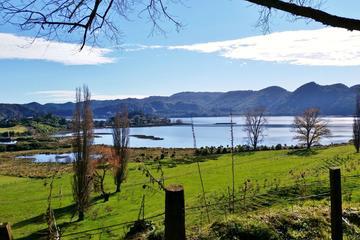
Though not as large as its surrounding neighbors, Lake Okareka is a local favorite for swimming, fishing, and boating. Children splash in refreshing water that's backed by deep green hills, and anglers fish for Rainbow Trout, smelt, and long-finned eels. The lake is popular with birdwatchers for the dozens of different species, and you can scan the shoreline for swans, coots, ducks, shags, pukeko, gulls, and stilts. A popular boardwalk that is wheelchair accessible hugs the shore of the lake …
» Lake Rotoiti
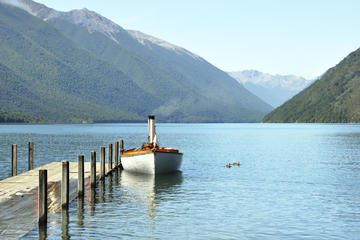
Lake Rotoiti is the boutique cousin to the larger Lake Rotorua. Although Rotoiti is connected to its massive neighbor by the narrow Ohau Channel, it has its own laidback, gentle feel. The lake is lined with the westward facing decks of holiday homes perfect for sunset views. The trout fishing here is some of the best on the North Island, particularly toward the Ohau Channel, where the two lakes merge. To get the full lake experience, head out on the water and sea kayak to hidden beaches …
» Lake Rotokakahi (Green Lake)
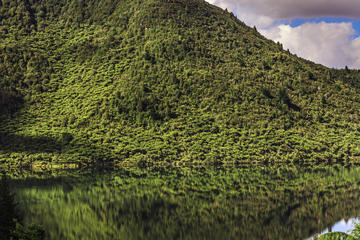
Even though it's right next to the wildly popular Blue Lake, the Green Lake - or Rotokakahi - is a sacred lake that isn't open to swimming, fishing, or boating. This lake is sacred to the Te Arawa tribe who are the area's original inhabitants, as the lake was the site of important battles and numerous sacred burial grounds. In the center of the lake is a small island known as Motutawa, where not only are the remains buried of a young Maori chief, but was also the site of a 19th century slaughter at the hands of a neighboring tribe …
» Lake Rotorua
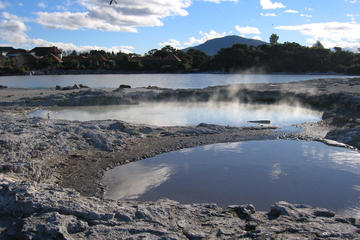
Although the Rotorua area is speckled with dozens of lakes, Lake Rotorua is a different entity, detached from its neighboring lakes. Larger, deeper and much, much older, geologists believe it dates back over 200,000 years. Some of Rotorua's other lakes were created by the Tarawera eruption of 1886, but Lake Rotorua is the original waterway to grace this section of the North Island. Unlike the ocean, the waters of the green-hued lake are colored by sulfur and minerals …
» Lake Tikitapu (Blue Lake)
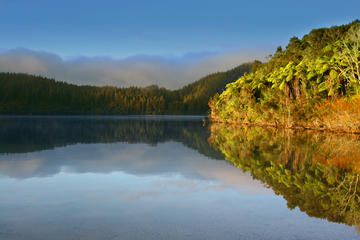
It's tough to decide which is more beautiful: the cobalt hue of the aptly-named 'Blue Lake' as it sparkles in the midday sun, or the deep green of the Whakarewarewa Forest that hugs the shore of the lake. Either way, the natural beauty is what makes this lake a Rotorua favorite, and it's the best place in town for swimming, water skiing, and reconnecting with nature. Thanks to a pumice and rhyolite bottom that's reflected by the sun, the blue color of this small lake is just too inviting for a swim …
Page 1 • Page 2
« NEW ZEALAND • Discover New Zealand • North Island • Rotorua




